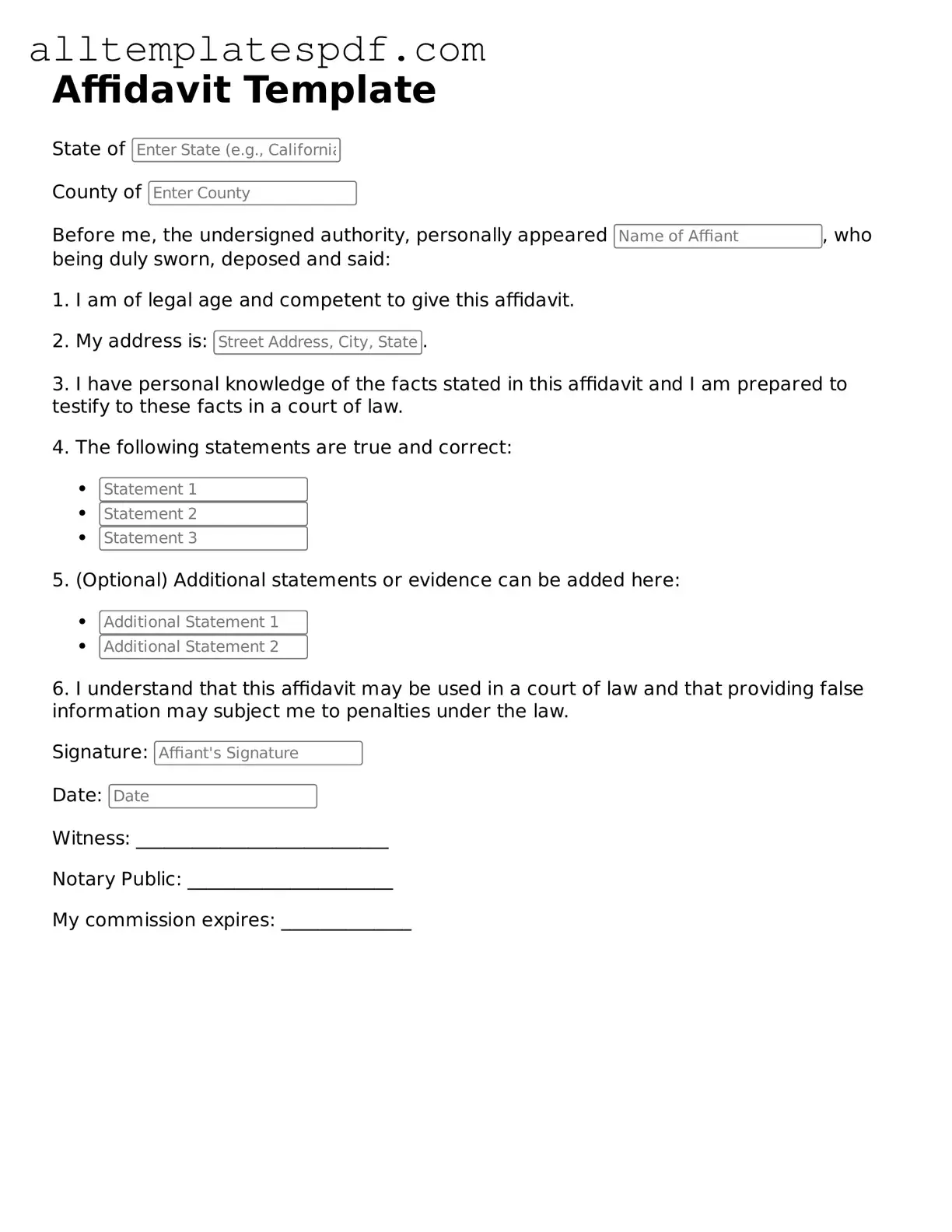Attorney-Approved Affidavit Template
An affidavit is a written statement confirmed by oath or affirmation, used as evidence in legal proceedings. This document serves to present facts that the affiant believes to be true, often in support of a claim or legal action. Understanding how to properly fill out an affidavit is crucial for ensuring its validity and effectiveness.
To get started, fill out the form by clicking the button below.
Open Editor
